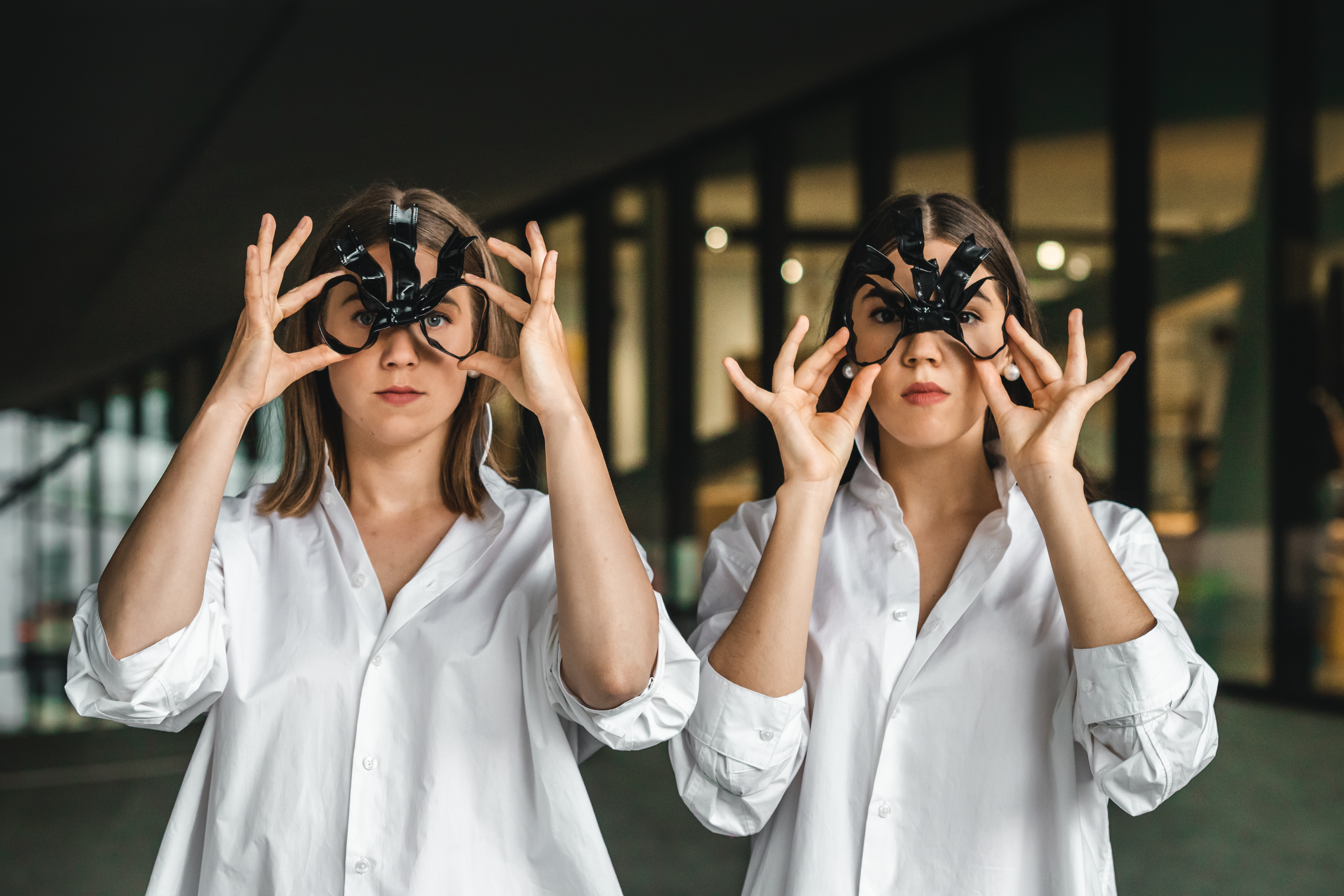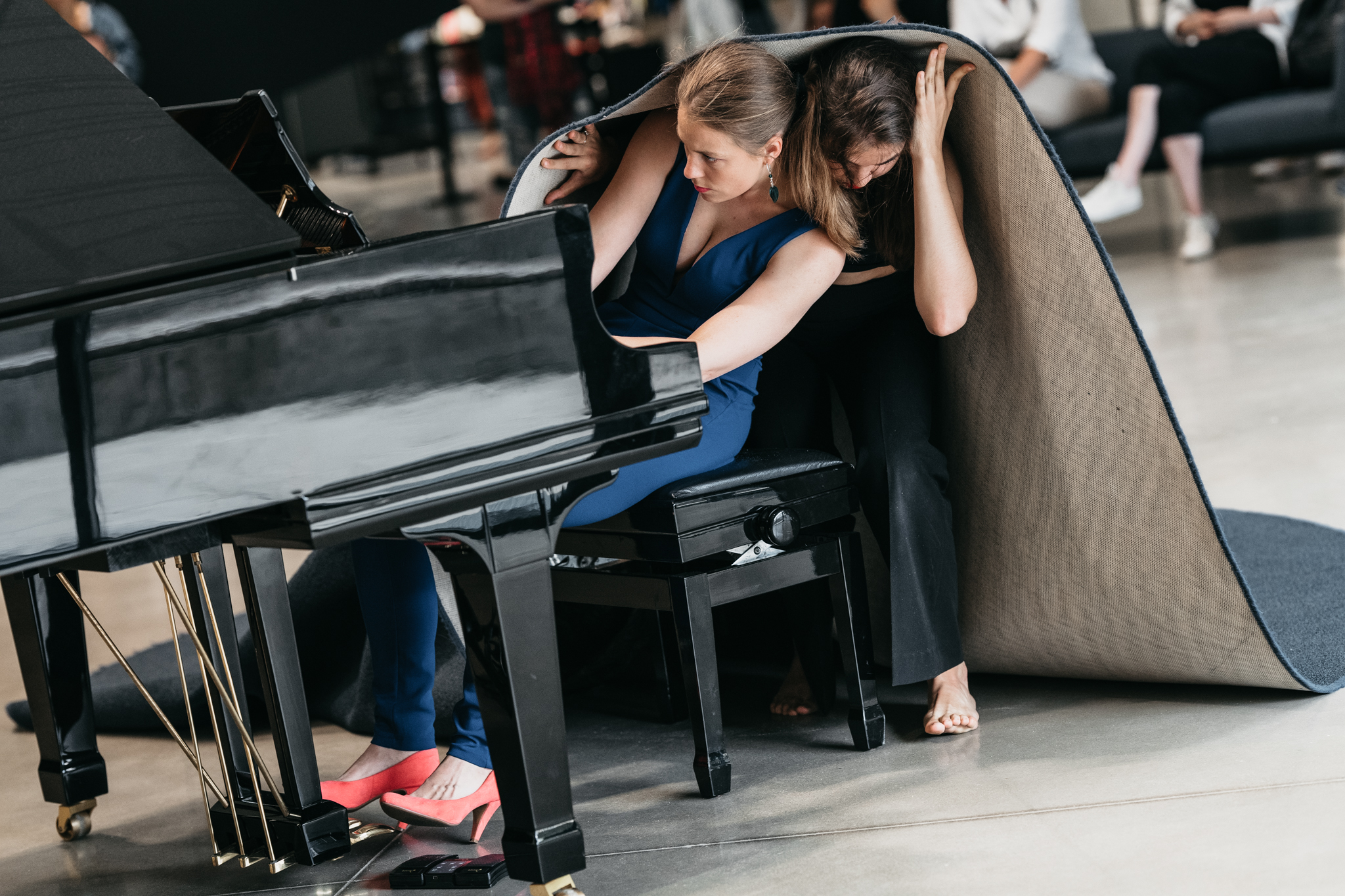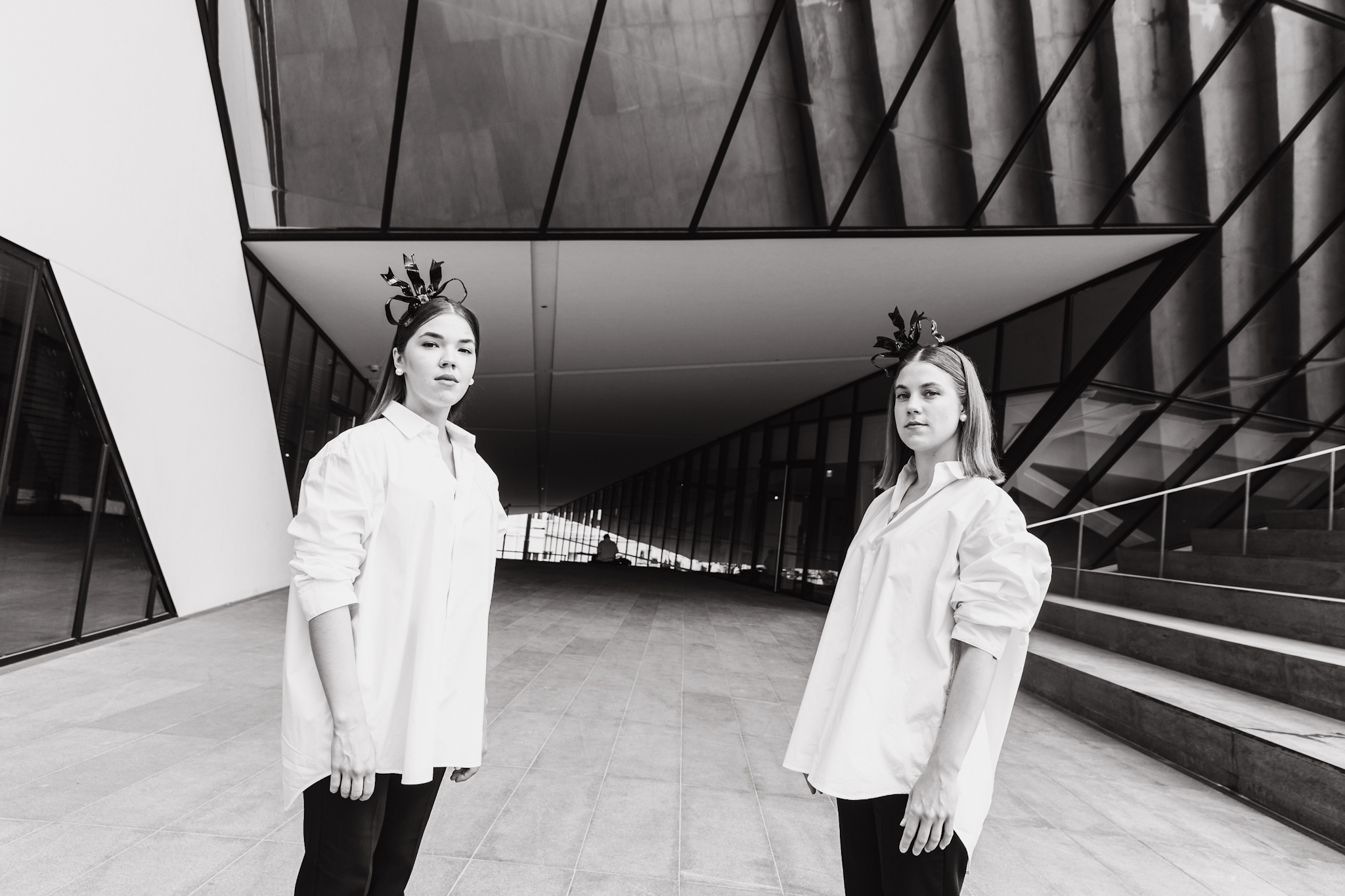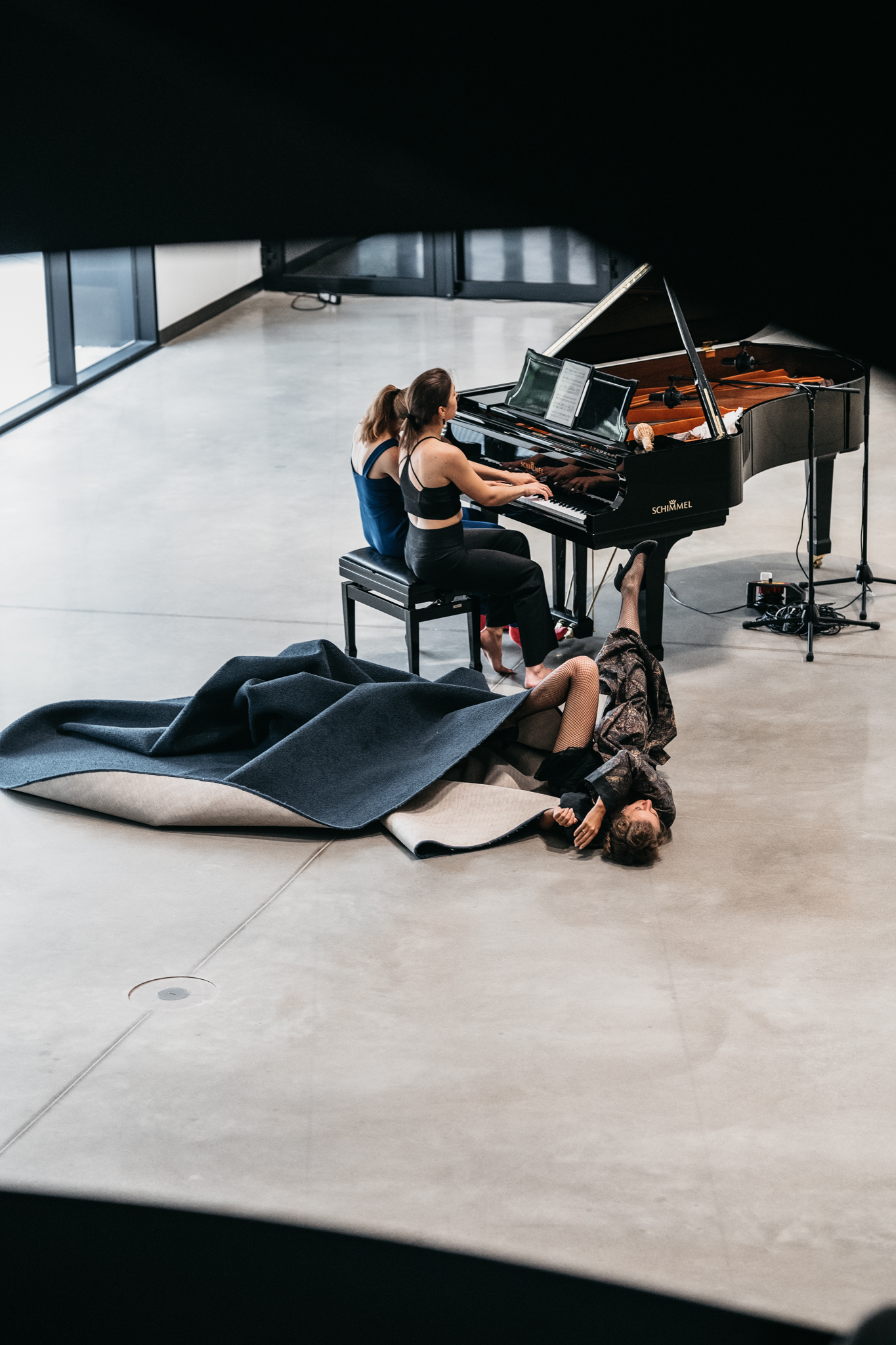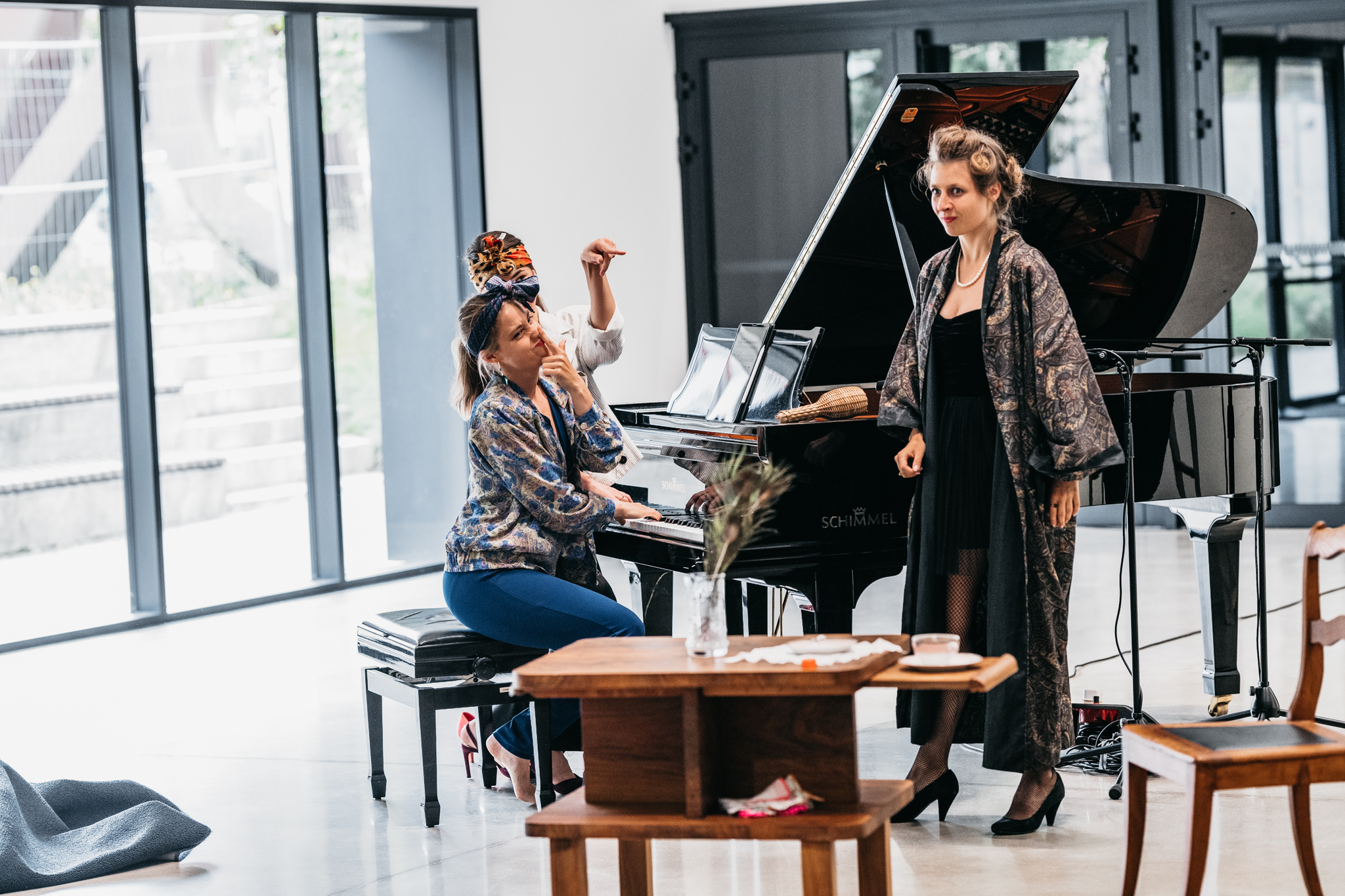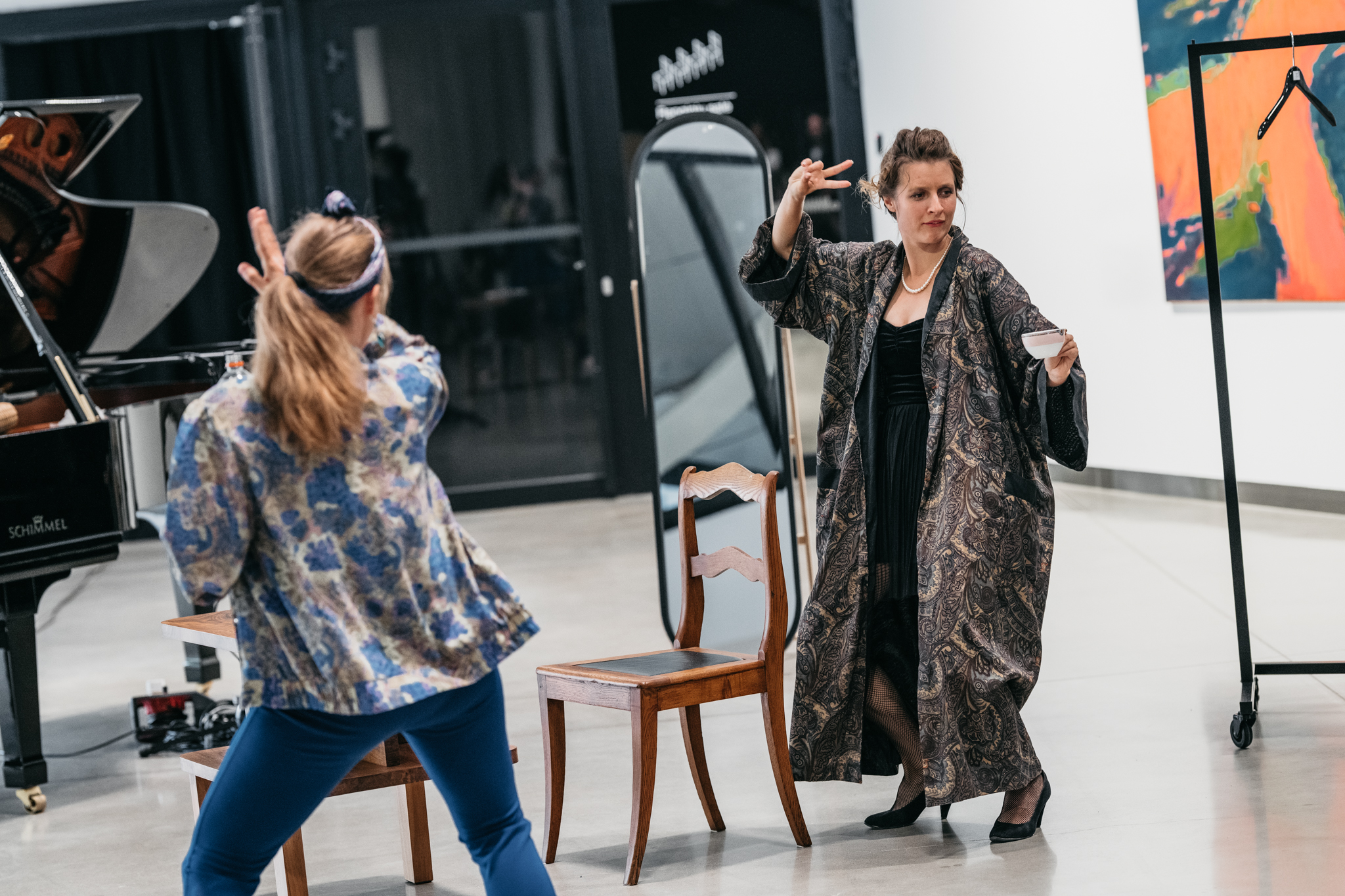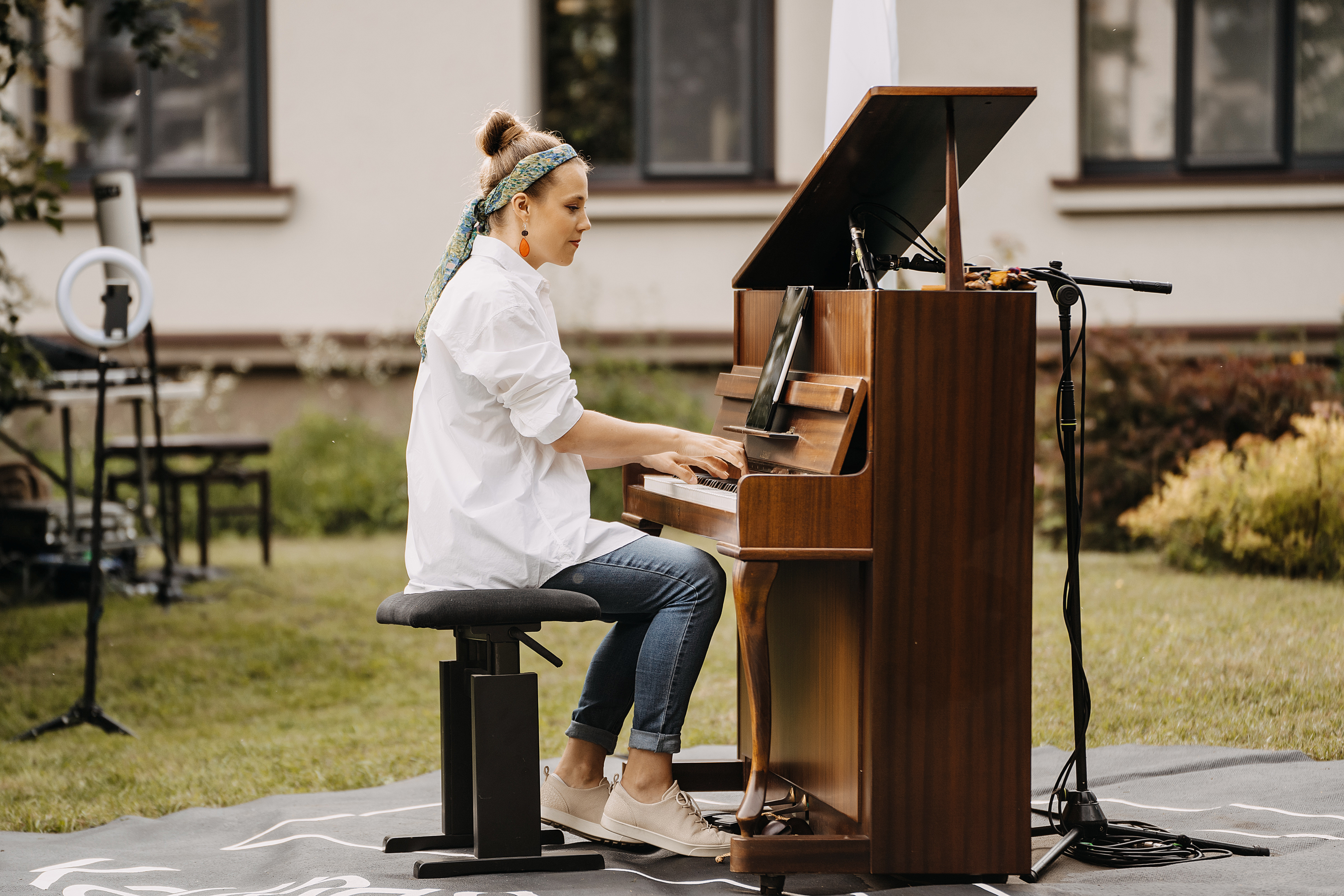Classical Music with a Touch of the Unexpected
- Sept. 26, 2022
By Justina Paltanavičiūtė
Piano Phase Project, a Polish-Lithuanian piano duo, base their artistic idea on an interdisciplinary vision linking classical music to other arts and creating music installations. Monika Lozinskienė, based in Kaunas, and Anna Szałucka, who lives in London, started their journey playing the legendary Piano Phase by American composer Steve Reich at the Mo Museum in Vilnius. The players were dressed by Juozas Statkevičius, one of the most internationally praised Lithuanian designers. After the first project, Piano Phase focused on a new installation, Summertime, which came to life as a collaboration with a contemporary circus performer, Marija Baranauskaitė. Since 2022, Piano Phase Project is represented by the City Music Foundation in London.
From a conceptual point of view, the Piano Phase Project was born from a love of music and the desire to share it with the widest possible audience. In this interview, Monika and Anna share their experience and describe their relationship with the classical music traditions and stereotypes still existing in this world.
IDEA
Anna: We started as a traditional piano duo. During the pandemic, Monika's cellist couldn't participate in one of the concerts and as I was in Vilnius at the time, we decided to play together. As a result, we presented two recitals, one at the Organum Hall in Vilnius, the other at the Kaunas Philharmonic. Almost exactly at the same time, we realised that we both wanted to experiment artistically and go beyond the traditional classical music performance. We decided to play Steve Reich's Piano Phase and create something new: a music installation. We didn't know at the time exactly what it meant but we knew we wanted the audience to feel free, to join us as they wished and be part of the music making process. The museum was also excited about the idea and helped us to make it happen. We were overjoyed with the result and decided to carry on taking Piano Phase as our new ensemble name to remind us of the shift in our perception.
Monika: Although times are changing, it's still rare to hear classical music connected with other artforms, like the circus for example. That's why this idea seems so compelling to us. This new concept encourages us to both perfect our technical skills and broaden our musical imagination.
UNIQUE DUO
Monika: We never really struggle to perform as a duo - I think we even breathe together, like one organism. Even our first performance, although spontaneous, went smoothly and without problems. I believe it was a sign, a call to search for our own niche.
Anna: And this niche is rarely a position an artist wants to occupy. It's scary but it can be really fun at times. In order to discover something new, you have to simply leave your comfort zone. Otherwise you keep on repeating yourself.
Monika: A niche art limits your audience, which makes it harder to reach more people. This is when you start reflecting on what exactly your listener expects and whether you can at all fulfil these expectations. While working on Summertime, a project with a contemporary circus performer, we were ready to receive both support and criticism, as our listeners might have been used to a more traditional presentation of classical music. This conservative tradition is almost sacred and our vision might look quite radical. But our fears vanished when we saw the smiling faces of our audience members after the performance.
IMPROVISATION
Monika: In jazz, a traditional improvisation with elements of classical music aims to present it in a different style. But our improvisation is different, created as a reaction to what is happening on stage at a given time. For example, we had to prolong the song Summertime quite a lot, as Marija was exploring the connection with the audience in the dancing scene. So we're always laughing that there's no need to rehearse! The listeners are our priority, so our improvisation has a different goal in itself.
Playing classical music, we often wanted a closer relationship with the audience. In our discussions we often talked about it but we'd never done anything to change it. Summertime is our first attempt to connect with listeners in a more direct way.
Anna: We were very happy to see such results - improvisation leads to the unexpected sometimes. In the performance I'm serving tea to Marija, but we couldn't really find a fitting Art Deco teapot so we used a plastic bottle with Ice Tea. Both me and Marija behaved so elegantly and glamorously and the audience burst out laughing, and the plastic bottle became one of our most treasured props.
Monika: It also became a key symbol of our show, representing our daily activities as a contrast to people's lifestyles.
POLITICS
Monika: Music performances very often bring up some political goals or ideas, but it was never the case for Piano Phase Project. This is something we agreed quite early on - we don't want to provoke our audiences.
Anna: We want our installations to spread joy and encourage listeners and other artists to get out of their comfort zone for a while. Expanding one's artistic horizons and connecting different artforms is what we want because it helps us with our personal growth and development.
Monika: The classical music environment follows its strict rules which listeners take for granted, like a certain dress code or behavioural norms. From our point of view, these almost sacred attributes limit the listeners and symbolise social status. But, of course, on the other hand it's absolutely right for a classical musician to be popular and play well-known music. For example, Lang Lang plays and records for Disney. So apart from having a great career and knowledge of classical music, he's doing things that provide great financial stability and are more accessible for wider audiences.
Personally, we want classical music to be loved and listened to because of its authentic content and value. Maybe this makes us a little bit political - wanting to break the stereotypes about how music should be played and perceived. Ultimately, we would like to ensure our listeners experience lots of joy and pleasure, especially during these turbulent times.
REPERTOIRE
Monika: We never choose our music, it seems like it chooses us. (Laughter). But we usually perform characteristic pieces, full of non-musical information/attributes.
Anna: We dreamed about performing Stravinsky's Rite of Spring as a project about Lithuanian nature, knowing that the piece is based on Lithuanian folk songs. However, due to the sudden change in the geopolitical situation around Europe, we were forced to abandon this inspirational idea for the time being. Instead, we've decided to go for jazz. Of course, the first name that comes to mind is George Gershwin, a composer also connected to Lithuanian heritage. And with Gershwin comes Summertime! The rest fitted perfectly. I've played his Preludes for many years and I've always wanted to arrange them for piano four hands. I've always felt that two hands are simply not enough for me.
Monika: In our Summertime installation, we also included music by Ukrainian composer Nikolay Kapustin. We wanted to show our solidarity with Ukraine during this time of war.
Anna: One project organically leads to the other, but our ideas are not impulsive. They are the result of in-depth analysis of the classical music repertoire. This allows us to connect different musical facts in our minds almost effortlessly. We are both mainly classical pianists. Once the repertoire is determined, our other creative thoughts find their ways around it. It's a natural process as every artist starts working on their concept in the field he or she feels confident in as a professional.
LITHUANIAN ROOTS
Monika: You can find many references to Lithuanian culture and tradition in our projects. In the summer of 2022, these connections came to life through Lithuanian musical heritage and the Art Deco style, for which Kaunas is famous. In the future we hope to present our new installation idea, Rite of Spring. The cycle is based on Lithuanian folk and we would love to show this perspective to our audiences around the world.
Anna: In October we will present Sound Meditation for the first time at the Bloomsbury Festival in London. It's an installation based on the music by Mikalojus Konstantinas Čiurlionis. As a Pole, I wish one day we can present an installation based on music by Karol Szymanowski, preferably in his Museum in Atma.
Monika: Anna loves spending time in Lithuania. She admires Lithuanian culture and has travelled around the country. We're both happy to incorporate Lithuanian heritage within our projects.
INTERNATIONAL
Anna: We've lived in different countries, but our collaboration has always worked very well. In the past we thought that living in one place would make our job more efficient, but this international aspect actually provides us with a lot of opportunities. I organise more performances in the UK, Monika in Lithuania. Cheap flights in Europe are a blessing in our case. Playing together comes very natural to us, so we don't need much rehearsal time.
Monika: Most of our work is really of an administrative nature - generating artistic ideas, finding the venues and financing, so rehearsing is in a way the easiest part of our collaboration.
Anna: Our job seems to me sometimes like shooting a film. We spend most of our time looking for the right place, angle, venue, lighting and other things - the action itself is, in fact, short.
AUDIENCES
Anna: The typical classical music audience usually consists of people of 50+ years old. With our project we want to reach younger listeners. Our target group are people between 20-45 years old. We've noticed that Summertime appeals to a wider audience - we've seen young children and their parents, teenagers and older citizens. There wasn't an age group that I could say was a majority.
Monika: I think everyone found something interesting in our installation. Some listeners are interested in acting, some in the clowns, some in the music.
Anna: Most young people have probably heard of Gershwin at some point, as his song Summertime exists in popular culture in multiple forms. Maybe they want to see and hear how this particular piece of music is presented as high culture.
Monika: It's interesting; while rehearsing Summertime we saw some teenagers in the Mo Museum observing our actions rather critically - but as soon as we did something funny with Anna they burst out laughing. They sat during our rehearsal for nearly two hours, quietly commenting how boring and unfunny they thought it was.
Anna: But they stayed until the very end, so they must have seen something compelling about our process.
Monika: For me it was fascinating to see the reaction of the audience. In this specific art form, installation, these reactions are usually very authentic, we feel it much more directly. I wasn't particularly excited to see someone who doesn't like what I do, but it was still fascinating to see someone with a critical attitude who was unable to leave our space.
LISTENING EXPERIENCE
Anna: People can connect with classical music regardless of their education - you don't need to have musical expertise to enjoy Chopin's works. However, a musical education allows us to experience many more aspects of classical music, such as the structure, the rhythmical nuances, the melodic shape, etc. Perhaps this is why it’s harder for the majority of people to feel a stronger connection to classical music; if you compare it with the visual arts it's a bit abstract as it doesn't represent any specific subject. That's why I think it's a great idea to bring other art forms into the classical music world.
Monika: The musical scene is constantly evolving. A hundred years ago, performing in an elegant concert hall was perceived differently, while today we have TV, cinema, the internet and many other forms of entertainment. It's possible that the sound stimulation isn’t enough anymore. If we have so many tools and technologies with different artistic expressions, why not use them? An 'untouched' art can exist as well, but I believe we shouldn't decide different aspects of art to be good or bad: if I play Chopin with a video installation then it's bad, and if I play it without video it's good. I think both worlds can coexist - the listeners can decide what they like best.
Anna: The traditional classical music scene will always have its audience, but we need to understand that it's slowly becoming an outdated form of music consumption. I hear about it every day - orchestras can't find the funding, music schools don't have enough students interested in studying there, concert halls struggle to sell out. As a consequence, state support is also diminishing every year, because these institutions are not so important in people's lives.
Monika: We shouldn’t forget that classical musicians are mainly freelancers. We want to be on stage, and this means we need to search for alternatives. Sometimes the reason is simple: financial gratification. It's a popular belief that artists shouldn't worry about money, but we live in a capitalistic society. Sometimes the need to make ends meet leads us to the most creative and unique artistic ideas.
Anna: Of course we're not talking about the Berlin Philharmonics, but about many younger students finishing music conservatoires and in need to find employment.
THE MEANING OF CLASSICAL MUSIC
Monika: Recently I saw a video recording of a techno performance of Tchaikovsky’s Swan Lake. There was one scene in which a fragment of this famous ballet was presented without techno influences, but with fireworks and a light show. Such an extraordinary performance of classical music in the context of an electronic music festival showed me that classical music can influence the listener in a profound way. I don’t know any piece from the popular repertoire that can be as shocking - in a good way of course! Only classical music carries this potential.
Anna: I think the most recognisable tunes in the world are indeed motifs from classical music, Beethoven’s for example. People whistle or sing it to themselves from time to time, not even knowing who composed it.
Monika: A lot of classical music is also used in pop culture, for example in adverts. I believe we often forget how big a part it plays in our lives.
